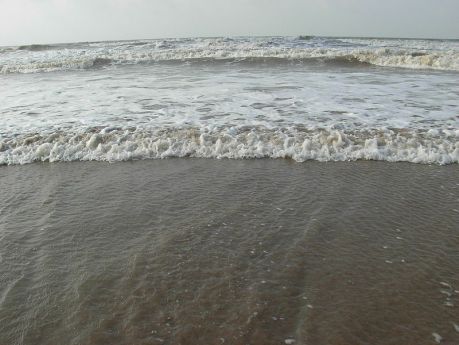Wearable robots that can anticipate and react to users’ movement in real time could dramatically improve mobility assistance and rehabilitation tools.
Innovative 3D simulation software enables plant managers to streamline factory operations and take into account the experience of workers themselves.
The EU-funded ROVINA project has developed an autonomous robot which can navigate, explore and digitally map hard-to-access areas
EU-funded researchers have created a tool to assess the impact of natural disasters on transport infrastructure in order to save both lives and money.
EU researchers have developed a new system to monitor industrial food processing in real time, an innovation that could have real commercial potential.
In the aftermath of the earthquake that struck the Italian town of Amatrice and its surrounding region on 24 August 2016, Italian authorities requested the help of the EU-funded TRADR project. The project stepped up to the plate and quickly deployed two Unmanned Ground Vehicles (UGVs) and three Unmanned Aerial Vehicles (UAVs) to the devastated region.
In a new paper, researchers from the University of Southampton, UK, and members of the EU-funded RAMP project, have demonstrated how memristors could help aid the development of more precise and affordable neuroprosthetics and bioelectric medicines.
EU-funded researchers are combining high-performance computational power with hardware and servers in order to build a more efficient, heterogeneous cloud.
New methods for achieving efficient paper recycling have been developed, creating new business opportunities in sustainably managing waste.
Understanding how our brains sustain ‘internal evolution’ – and help us to adapt and learn complex skills such as language – could one day lead to smarter robots.
Researchers have combined sugar alcohols with carbon nanotubes to create a material capable of storing renewable energy as heat.
The EU-funded XP-DITE project is trialling the world’s first security system that could halve security time at airports by combining EU and US checkpoints into a single checkpoint.
With the use of affordable, low-tech femtocells, the EU-funded TUCAN3G project is bringing 3G connection to the otherwise unconnected regions of the world.
With fresh insights into navigational behavioural, the EU-funded ANT NAVIGATION project brings us a step closer to the next generation of neuroscience breakthroughs.
To address the evolving cybersecurity threat, the EU-funded SHARCS and PQCRYPTO projects are developing the security paradigms, architectures and software needed to ensure our ICT systems are secure and trustworthy.
What can software designers and ICT specialists learn from maggots? Quite a lot, it would appear. Through understanding how complex learning processes in simple organisms work, EU-funded scientists hope to usher in an era of self-learning robots and predictive computing.
Research aided by the DELICAT project has highlighted how turbulence can be detected in a much faster and more efficient way, using data already routinely broadcast by commercial airlines.
A team of US and Israeli researchers, partly funded by the EU, have developed a truly pioneering cinema screen that can show 3D films without the need for glasses.
A ground breaking EU project has delivered a cloud-based platform along with a range of apps and tools to help get European cities moving sustainably.
Completed in April 2016, the BIO4MAP project is now bringing a new type of sustainable food packaging to the market. The consortium promises a significant increase in shelf life for fresh pasta and cheese, a cost 25 % lower than alternatives, and an environmental and carbon footprint reduced by up to 29 %.
EU researchers believe these new, innovative qubits could serve as the information units for the quantum computers of the future.
Tragic events such as the recent Brussels Airport bombing have enlightened the need for stronger security measures and improved technologies. This is one of the applications the MIRPHAB project team had in mind, as they unveiled a chemical sensor capable of detecting the likes of drugs and explosives from a distance of 30m.

An EU-funded project has unveiled an innovative and competitive waterborne transport solution with zero emissions. It is opening up new possibilities for efficient electrically propelled vessels.

The introduction of electric vehicles (EVs) offers many environmental benefits, yet they cannot cover great distances. An EU-funded project addressed this challenge by developing cheaper and safer lithium-ion (Li-ion) batteries with energy densities approaching 200 Wh/kg.

To adequately harness the energy of waves, it is necessary to cost-effectively and safely attach or anchor wave energy converters (WECs) to the seabed. New anchoring and mooring solutions will reduce the costs associated with station-keeping, which currently accounts for a considerable amount of converter production costs.


